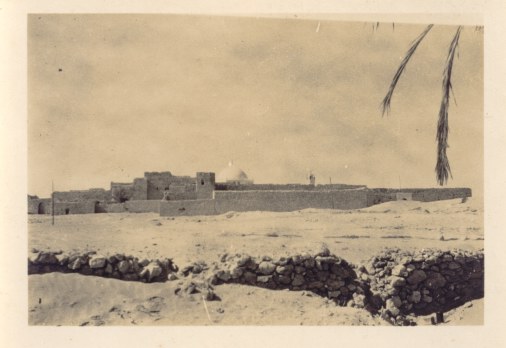EGYPT
SECTION ONLY STARTED
put map of country here with towns as links, under each town put the various landing grounds and story and pics of each. Descriptions and short history of each major relevant center.
SPELLING & PRONUNCIATION For nearly every name of a place, town or village in the Western Desert Theatre, and indeed in nearly all of the Middle East, there are numerous spellings and pronunciations for the same name. Be forewarned, this holds true for many official documents including maps. Even the people who lived there often have different spellings of the same place. Aside from the obvious confusion, this makes the theater tedious to research and nearly impossible to obtain full results on a search without trying several different spellings. Some of the more common ones are as follows:
(Surt - Sirte) (Banghazi - Benghasi) (Darnah - Derna) (Tubrug - Tobruck) (As' Sallum - Sollum - Salum) (Al'Alamayn - El' Alamein - Alamein) (Siwah - Siwa) (Marsa Matruh - Mersa Matruh - Mersa Matrua) (Sidi Barrani - Sidi Barini) (Bardiyah - Bardia) (Al'Jaghbub - Jaribub - Jeribub - Jarabub - Giarabub - Gerabub) (Gialo - Jallo ) (Ma'aten Bagush - Maaten Bagush - Martin Bagush) (Sidi Hanish - Sidi Haneish)
The Airman's Life In The Desert
By Corp Norman George (Mark) Lamb
Airmen lived nomadically in the desert as the Bedouins do. There were no tarmac runways, no hangars, no headquarters buildings or barracks, no control tower, no concreted petrol stores. The desert airfield was nothing but a large space of desert scraped smooth and hard. Around the edges were scattered tents and trucks and aircraft, large square marquees called E.PI.P. (European personal Indian pattern) were used for various messes, operations control, and orderly room, the airman's tents were waist-high bivouacs, the rest stood on wheels. The office of the commanding officer was a caravan trailer, as was the signals units and the engineer's workshop: the cookhouse was a field kitchen.
The whole lot could be bundled into the trucks and be away within an hour. Dress for the airmen was Khaki shorts and shirt, just shorts in the summer heat, but Khaki battle dress in the winter with sweater and jersey as the nights got so cold, The chief torment of the desert was dust storms, they came with the hot Khamsin winds from the south, they were so strong they could blow down a tent, everything would be covered in it, eyes nose, ears, also got In your food and tea. The food was usually bully-beef with some garnish at times, but we sufficed. There was enough chlorinated water for tea and when they were near an oasis could manage a bath, or when near the sea, strip off and swim in the warm blue sea.
The comradeship was great in the squadrons: nights spent in the mess tents, some one playing a mouth organ and the rest singing the old songs. The 113 was one of the best and will always be remembered by every-one who served with it.
~Velox et Vindex~
Heliopolis
Quite a grand name, City of the Sun and a fitting place to start our exploration of the aerodromes and landing grounds of 113 Squadron. Heliopolis, unlike many of the desert land grounds and jungle strips that they later flew out of, is one of the few places that the squadron operated from that you could confidently point at a map and locate.
Heliopolis has history, being one of the first aerodromes in Africa. It also has geography, being a suburb of Cairo and a stopping point for those early aviators who tamed the flying beast and then went on to conquer the globe. They would stop at Heliopolis to be photographed by the Pyramids, which could be seen from the aerodrome.
By 1910 airmail was commonly sent from Heliopolis, indicating this was an important communication point. Egypt was at this stage politically an independent country but under the protectorate of the British Empire, who wished to tightly control access to the Suez Canal and ensure the lines of communication and supply to and from its furthest reaches.
At the outbreak of the First World War Heliopolis had a starker purpose. Its long flat lands were used as marshalling grounds for troops from the Anzac nations most notably in the lead up to the tragic assault on Gallipoli
In 1920 the first England to Australia Air Race was held.
This is a brief summary of the flight from England to Australia in 1920. It follows the actual route taken by Parer and McIntosh which varied considerably from the intended course in many cases. The 11,000 mile flight had taken 237 days and involved 61 takeoff's and landings. Out of these 18 were forced landings and 7 out of these were crash landings. A total of 5 propellers were destroyed on the flight.
Race Start at Hounslow to field near Conteville, France: Parer & McIntosh departed Hounslow Airport at 10.30am 8th Jan. 1920 heading for Le Bourget, France. Parer made a forced landing in a field near Conteville due to heavy rain storm. Damage: Blown tyre and badly twisted wheel.
Crete to Mersa Matruh (Nth Africa): After a risky sea crossing with the engine running roughly due to the faulty valve spring they landed on the beach near Mersa Matruh for refueling before setting off for Cairo. Mersa Matruh to Heliopolis Airfield near Cairo: After a meal they were advised to fly to Helwan about 16 miles away where the aircraft could be serviced by R.A.F. mechanics.
Cairo to Helwan: At Helwan the mechanics checked the machine over and found the whole tail section was loose. They completely overhauled the airframe and engine & a larger radiator was fitted that would be more suitable for the tropics. McIntosh replaced the lost maps for the Egypt to Karachi leg.
And indeed the route took them through India and Burma where we may meet them again before finally landing them in Melbourne.
Point Cook to Flemington Racecourse, Melbourne: 31st Aug. Parer and McIntosh arrived at the racecourse at 2.30pm in Jones's DH9A with coloured streamers trailing behind it and an escort of 13 aircraft. Parer's venerable old plane known as the 'PD' the initials of Peter Dawson the whiskey millionaire sponsor was already on display on the ground.
As the years went by Heliopolis increased in strategic importance. Italy's land grab in Libya and Ethiopia with the aim of forming an Italian Empire increased local tensions and the British Empire strengthened its hold over Egypt, Palestine and Iraq. The oil fields in Iraq were almost as important as the Suez Canal and any expansionist nation looked greedily upon them. AUTHOR - Duncan Say
Mersa Matruh
description and writeup pending
Ma'atan Bagush
description and writeup pending
Waterloo ~ LG-68
description and writeup pending. About 9 miles west from Maaten Bagush.
Sidi Haneish
RETURN TO BASE BIR ZIMLA
(Oil Painting by Sgt Ewan Brooking RAAF)
Prewar Sidi Haneish was simply a well, but during the war it became home to a string of airfields and is better described as an area rather than a specific place. Within this area the 113 Squadrons home was known as LG-15 or Bir Zimla (Latitude: 31.0827778 / Longitude: 27.6683333), a satelite of Ma'aten Bagush approximately 15 miles East of Mersa Matruh. There is no settlement here. The 113 Squadron was stationed here following the return from Greece in 1941.
The squadrons airfield was up on the escarpment above (North) of the railway line with the Station of Sidi Haneish below, and was classed as a satellite of Ma'aten Bagush. It was just a large tract of desert cleared and leveled. The Officers mess and the Sargeants mess were pre-fab timber buildings fitted out with tables and chairs, and a bar. The other ranks mess was a large marquee, and the Ops room and stores were smaller marquees.The C.O.'s office was an ungainly box trailer on a high wheel chasis.Tents were used as billets, with two or four man occupants, and were dug in and also surrounded by a sandbag low wall.
Sidi Haneish was later to become home to the Germans as they pushed their way towards Egypt. In November 1942 this area was flooded in a freak rain storm.
Giarabub
Giarabub (Jaghbub, Jerabub, Gerabub, Jarabub as it is often called) is an oasis in the Libyan desert, province of Cyrenaica, near the Libyan - Egyptian border approximately 150 mi south of Sollum and the Mediterranean. The nearest other village is Siwa approx 70 miles East across the border in Egypt. Giarabub is literally in the middle of nowhere, with no roads, the only way to get there is a long and dangerous trek following sand tracks through the desert. Looking out from Giarabub the Great Sand Sea stretches away into nothingness as far as one can see to the south of the oasis, and to the North, East and West one looks out over the rock strewn ground of barren craggy valleys and strange ugly wind eroded hills. If it is not the most desolate place on earth it must be high on the list, most of those who have been there 'under the adverse conditions of war' considered it a fly infested hell on earth.
Giarabub 1941
SOURCE: George Checketts
Between Siwa and Giarabub and roughly tracing the Egypt - Libya border is a crude barb wire boundary extending from Sollum at the Mediterranean to the Quattra Depression East of Giarabub, from the Depression South is a series of shallow saltwater lakes.
The town itself is walled and is a holy city of the Sensui containing somewhat traditional Arab buildings, the focus of which is a white-domed mosque containing the tomb of the founder of the sect. 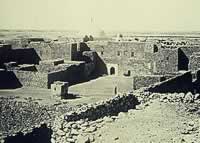 Located at the northern edge of the Libyan Desert on ancient pilgrim and caravan routes, it was the centre for the Sanusi religious order (1856–95) because of its isolation from Turkish and European influence. The sect founded there a religious retreat and its Islamic university and library.
Located at the northern edge of the Libyan Desert on ancient pilgrim and caravan routes, it was the centre for the Sanusi religious order (1856–95) because of its isolation from Turkish and European influence. The sect founded there a religious retreat and its Islamic university and library.
In October 1941, 5th Indian Division, 29 Group under Brigadier Marriott, the general reserve for G.H.Q. provided transport, escorts, and an unloading party for two convoys which arrived at Giarabub to establish an R.A.F. landing ground and to make a fresh dump of stores. It would not be long afterward before the 113 Squadron would arrive to occupy it. 33 Squadron flying Hurricanes operated from here also.
Italy was no friend of the Arabs in Libya - Cyrenaica, who having seized & colonized the country skirmished with the Arab native tribes throughout the 1930's. Musolini's army created concentration camps to house great numbers of the local population who opposed the Italian encroachment. All trade was then stopped with Egypt who had been assisting the dissenters, this in turn deprived the locals of trade and the ability to support themselves.
In 1942 an Italian movie by Goffredo Alessandrini's titled GIARABUB was made depicting the Italians under siege by enemy British forces. While it is not a portrayal of the true story it was apparently used as propaganda to bolster the Italian Troops fighting spirit.
In the 1960's oil was discovered between Giarabub and Gialo and is now home to a huge oilfield.
Somewhere in the area is The Lost Army of Cambyses. This mighty Persian army of fifty thousand men is buried with all their equipment near Siwa. They disappeared without trace in 523 BC on their way to destroy the sacred Oracle of Siwa on the borders of Libya.
Giarabub
Copyright W.O Ted Rawlings / Frazer Snowdon
(REF A:) http://72.14.207.104/search?q=cache:vyhUV_9fFzUJ:www.ku.edu/carrie/specoll/AFS/library/4-ww2/Ball/fire06.html+giarabub&hl=en
LG-125
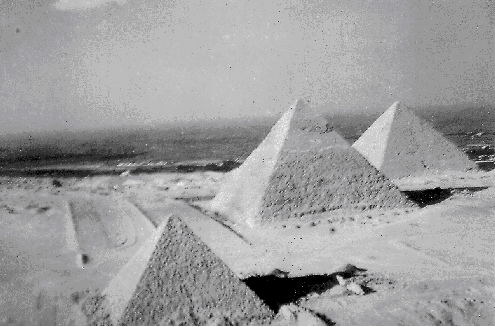

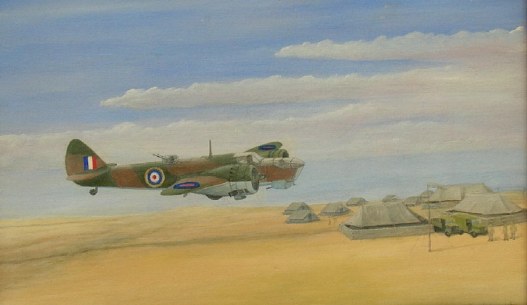
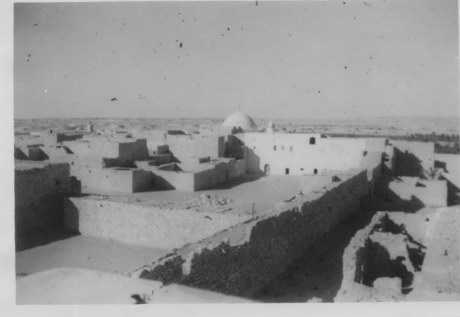
 Located at the northern edge of the Libyan Desert on ancient pilgrim and caravan routes, it was the centre for the Sanusi religious order (1856–95) because of its isolation from Turkish and European influence. The sect founded there a religious retreat and its Islamic university and library.
Located at the northern edge of the Libyan Desert on ancient pilgrim and caravan routes, it was the centre for the Sanusi religious order (1856–95) because of its isolation from Turkish and European influence. The sect founded there a religious retreat and its Islamic university and library. 